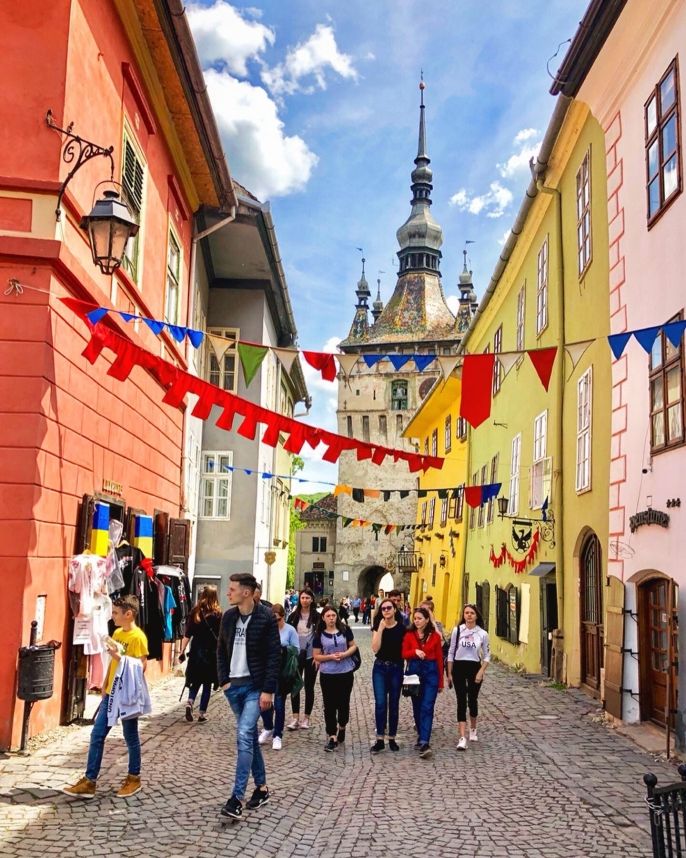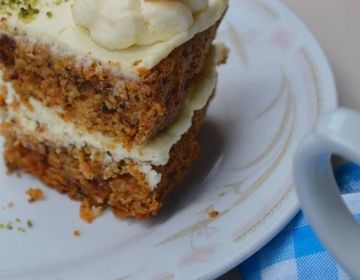Roaming Romania- Part 2
In my opinion, ‘city’ might not be the correct term for Brasov (in fact, I find that many European ‘cities’ resemble more of the likes of ‘towns.’). To meet halfway, we’ll just call Brasov a large weekend-getaway town. Located beside Tampa mountain, the whole town is a great place for hiking and taking day trips from. Which is exactly what Bethany and I did.
On our first full day in Brasov, we actually took a half-day trip to Bran’s Castle.
Doesn’t sound familiar to you?
Maybe you’ll know its more popular name- “Dracula’s Castle.”
Bran’s Castle (AKA “Dracula’s Castle”)
Getting from Brasov to Dracula’s place was actually very easy. Just a 50- minute ride on a bus.
And I would love to say that finding the front gate to Bran’s Castle is also super easy, but Bethany and I walked right past it (in our defense, a line of buses blocked our view of the gate) and we ended up walking down a deserted road for quite some time before figuring we should make a 180. Tip for traveling to a touristy site- if there’s no tourists around, you’re probably going the wrong way.
Anyway.
Bran’s castle was pretty cool to checkout.
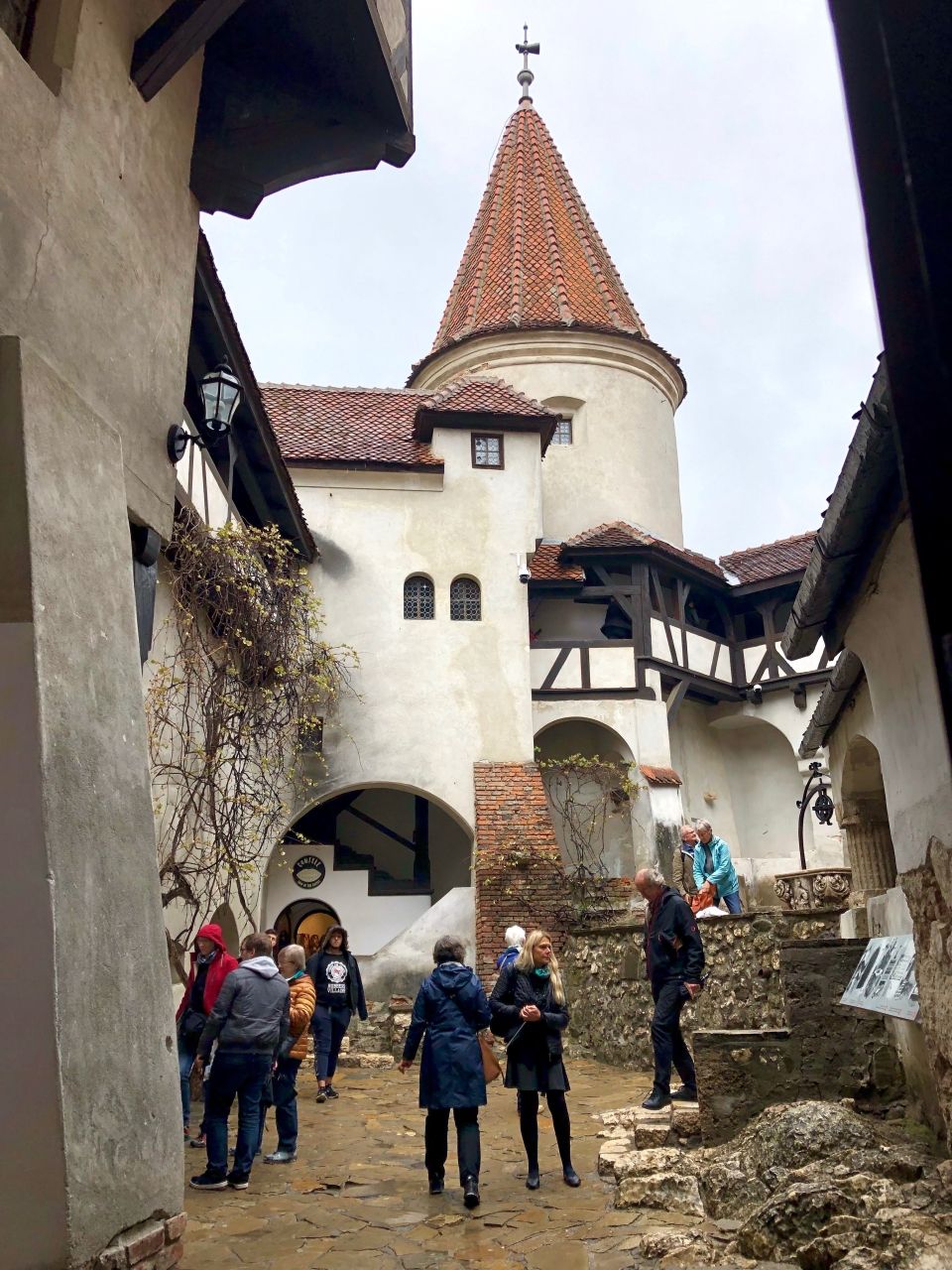
And despite what one may assume, the place itself was not really creepy. In fact, the rooms for the royals looked quite cozy.

But don’t worry, the weather outside still made you feel like you were in Dracula’s home:
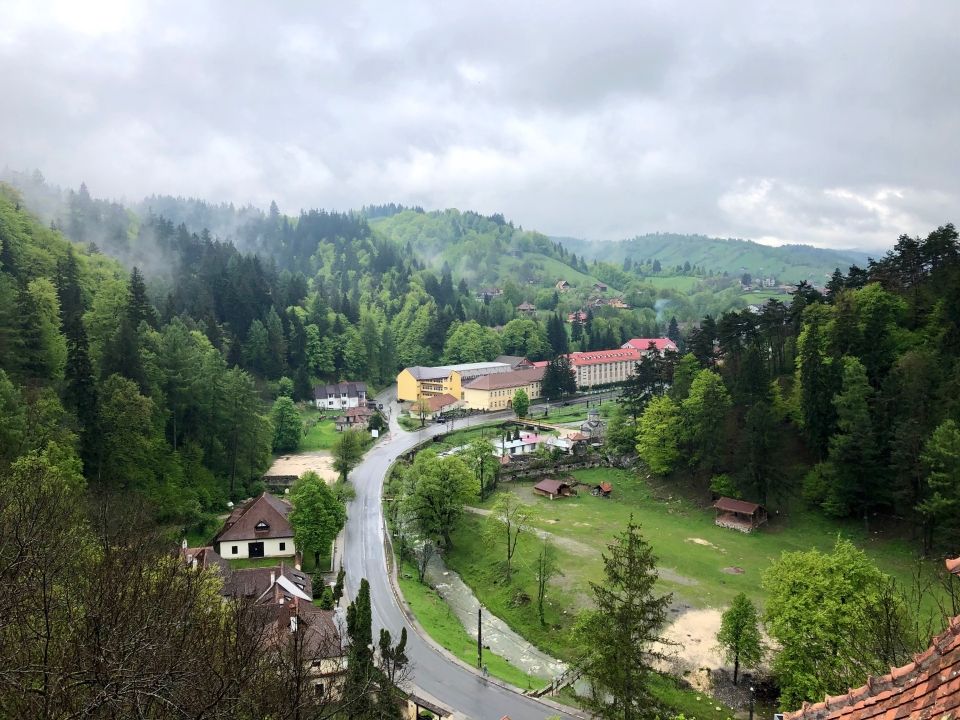
And the secret passage was also horror-movie worthy:

But aside from that, no traces of vampires were present (although sellers of Dracula souvenirs at the base of the castle would beg to differ).
Why?
Sorry to break it to you, my friends, but Vlad Tepes- real man who inspired the story of Dracula- was not a vampire (admittedly though, he was another scary force to be reckoned with). In fact, it’s unknown if Vlad Tepes/Dracula was ever at Bran’s Castle.
So what’s the connection between vampire Dracula, Vlad Tepes, and Bran’s Castle?
Irish writer Bram Stoker. The author of Dracula.
Bran’s castle was used as inspiration for the novel because it was well known as a giant fortress that was difficult to conquer. Plus, located in the Carpathian Mountains, the whole area gave off an aura of mystery.
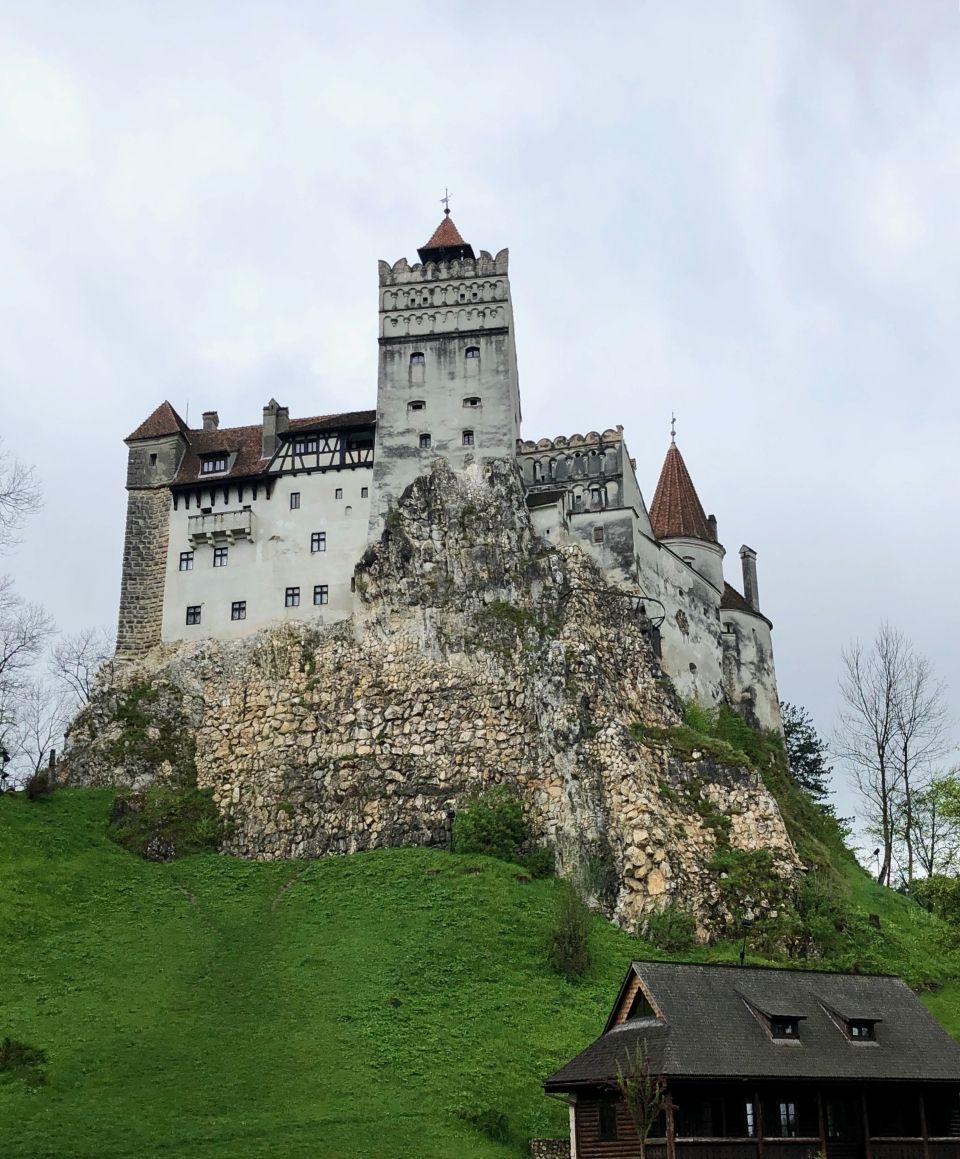
Meanwhile, Prince Vlad Tepes was used because of his reputation for carrying out gruesome punishments.
When Tepes was young, he was held captive by the Ottoman Empire and forced to learn the Turkish language, customs, and military techniques. Upon his father’s death, he was allowed to return to home to Wallachia (a region of Romania). Instead of turning the land over to the Turks and being their puppet, however, Tepes sought independence for his people.
When an army of 2,000 Turks came to seize Wallachia, Tepes was somehow able to capture them. He then greased a bunch of large stakes with pig lard- Turks are not supposed to digest pork- to prepare for his infamous punishment. Without getting too much into detail, Tepes had the enemies placed on top of the stakes so that- aided by lard and gravity- the point would enter through their bottoms and exit through the neck area. Since the stake did not pierce any vital organs, this method meant that the victims stayed alive for the next 48 hours.
Tepes then burned the crops and poisoned all the water leading to Wallachia and erected the dead soldiers on their stakes. And so, when the Ottoman Empire sent in reinforcements, many of the soldiers turned back due to weakness and terror.
Tepes’s common method of killing became well-known, thus earning him the nickname of “Vlad the Impaler” and making him a very feared person.
Tepes’s other nickname- “Dracula”- came about simply because of family linage. Tepes’s father had the flag symbol of the dragon. The simple townspeople who saw the flag interpreted this as the sign of the devil and nicknamed him “Dracul” (the word for ‘devil’ in Slavonian). And so, the name given to Tepes- ‘Dracula’- literally means “son of the devil.”

Now you get to decide- who is more horrifying? Real-life Tepes or the fictional character of Dracula that Tepes inspired.
Sighisoara
The next day, we took another day trip from Brasov. This time to Sighisoara. Bethany and I simply referred to this town as “the dinosaur place” as we had no idea how to pronounce its name (and still don’t).

For the more laid-back and lazy traveler, Sighisoara is great because there’s not too much to do and you can easily cover the whole town in 2 hours. The rest of the day can then be spent strolling around while eating ice cream and grabbing some drinks at a place with outdoor seating. Normally, I’m more of an ‘on-the-go’ person when traveling, but since we had spent the last few days on the move, I was fine with bumming it for an afternoon. Plus, the weather outside was absolutely gorgeous. Ice cream and wine it was then.
What we did in Sighisoara for the first 2 hours was…
Visit the birthplace of Vlad Tepes:
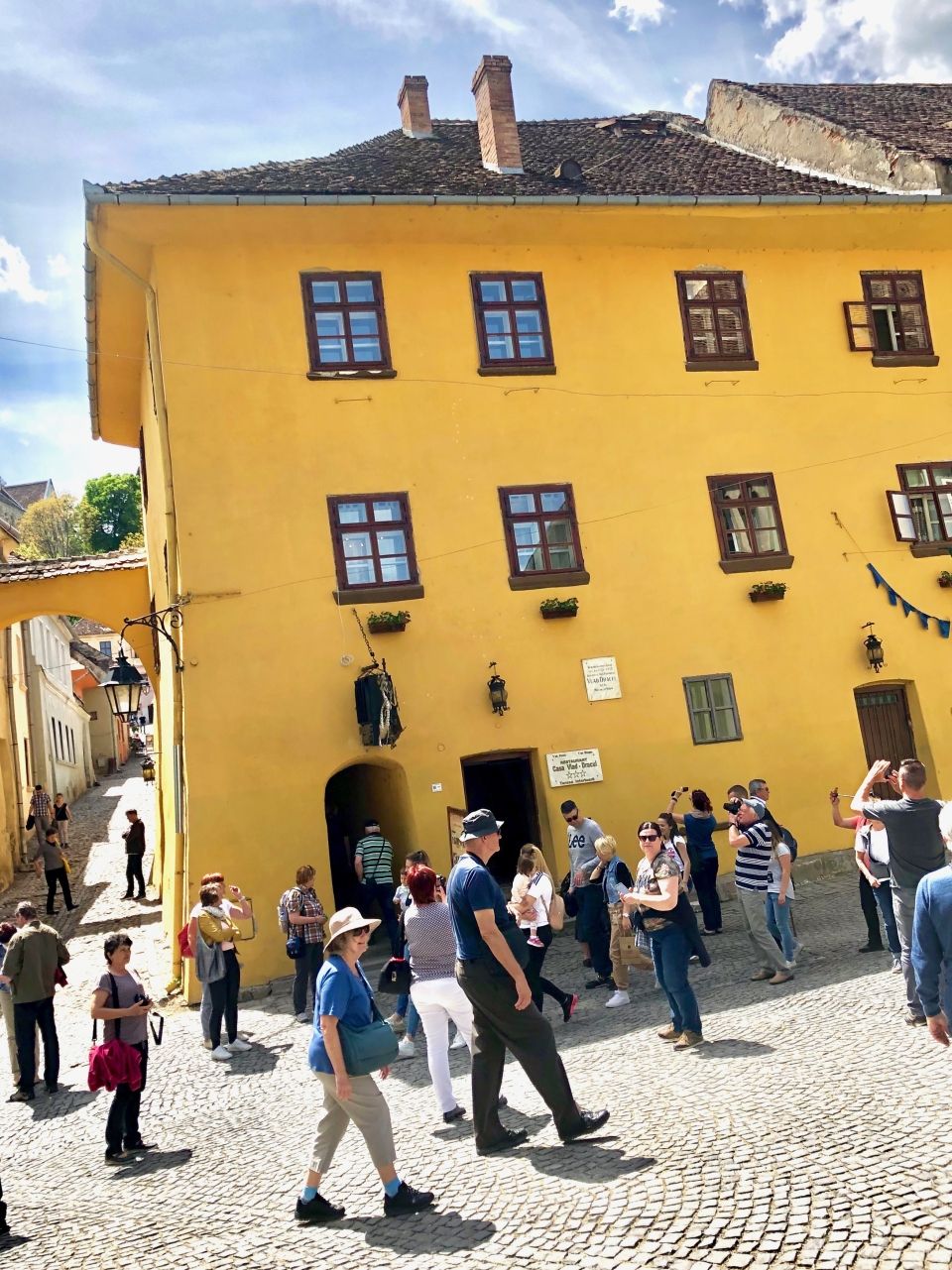
Climb the clock tower for a view of the city and check out the museum within the tower:


Climb the 175 steps of the Scholar’s Stairs. Originally, it consisted of 300 steps. Poor schoolchildren who had to make that climb every day.

At the top of the stairs was, of course the old schoolhouse, but also a church and cemetery:

And as far as historical sights go, that was pretty much it. So what makes this UNESCO World Heritage Site so special and worth seeing?

The colorful buildings in Old Town, of course! Literally, every building is a different, bright color.

The fact that all the buildings are built after a medieval fashion makes it pretty to gaze at while strolling around with ice cream in hand.

And to think, Dracula/Vlad Tepes was born here.

Just goes to show that not all of Transylvania is dark shadows and vampire legends.
Brasov
Last but not least, let’s talk about Brasov; the home-base of our day trips and a laid-back ‘city’ itself worth exploring.

The whole time I was there, I couldn’t get over Tampa mountain, which loomed right over the whole town.
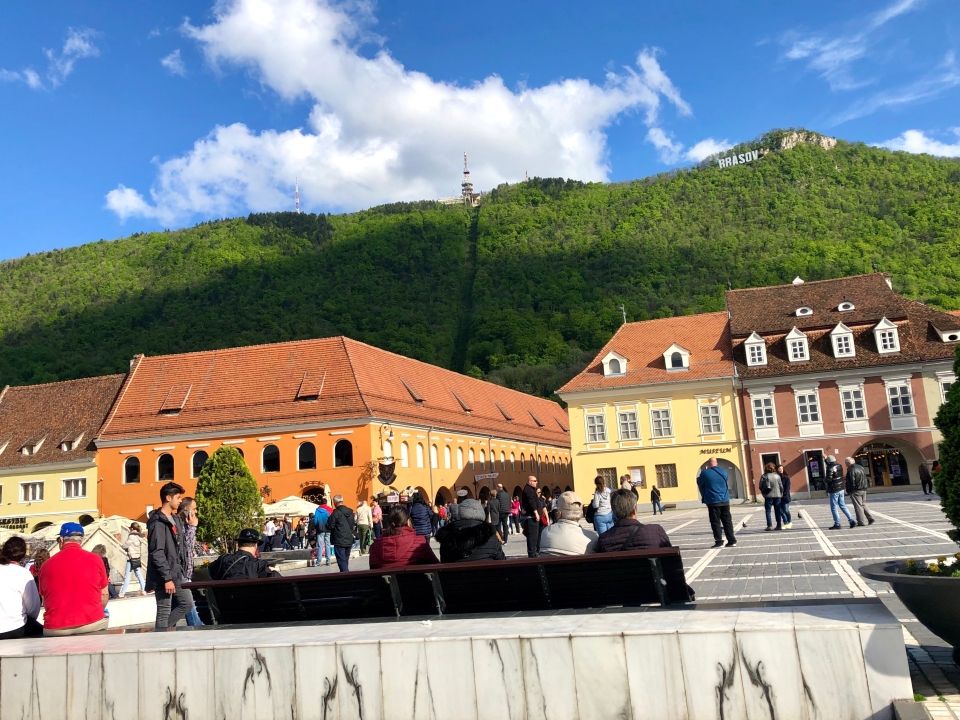
Like in Bucharest, we also took a Free Walking Tour of Brasov. This tour meets every day at 6:00pm in the Piata Sfatului (The Council Square). This was perfect as it gave us a little time to relax after our half day-trip to Bran’s Castle.
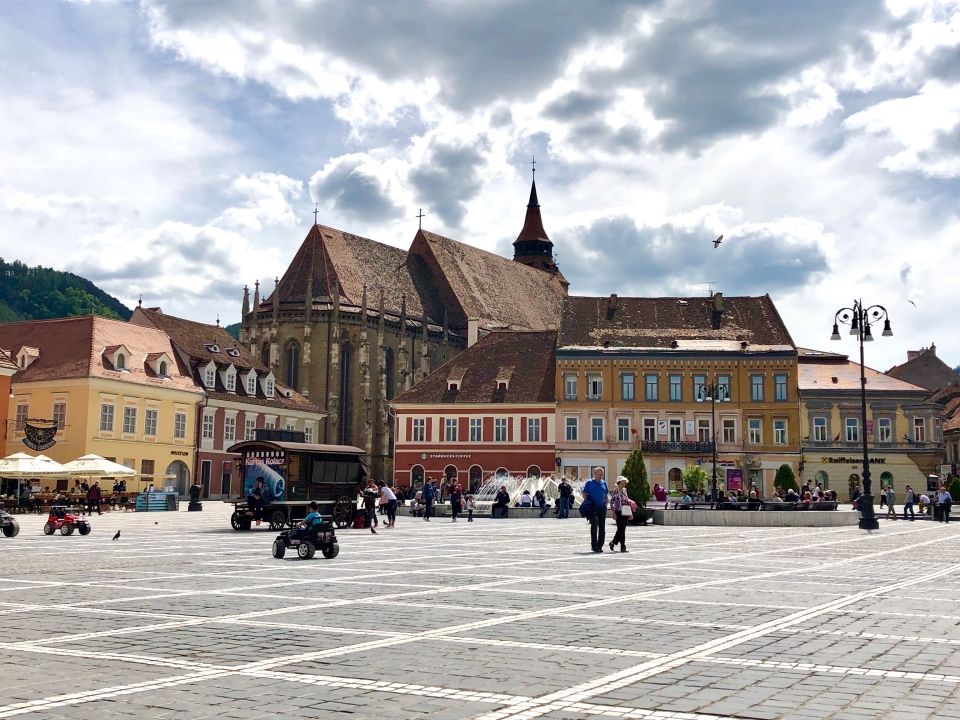
Events at the Council/Main Square have ranged over the years from being a place for happy weddings to public executions for entertainment purposes.

Next, we saw the Black Church:

Which isn’t actually black. The church earned this nickname after a fire started here that spread and killed 1/3 of Brasov’s population in 1689.
The aftermath of this catastrophe led to the construction of Strada Sforii (Rope Street), which is one of the narrowest streets in Europe:

It was constructed right through a series of buildings so that, in case there was another great fire in the City Center, firefighters could get there faster. Supposedly, the street is just wide enough for one person to go through at a time with 2 buckets of water.
We also saw Catherine’s Gate, the only remaining city gate from medieval times:

I was a bit surprised at the state of the entrance gate- it looks like Disney’s newest castle rather than an ancient Romanian outer wall.
Fun fact- A tower with a center point that is surrounded by 4 smaller points held symbolic meaning and served as a warning to visitors- any wrong-doing would be punishable by death.
After I learned this fact, I began to see this type tower everywhere. No worries though. Romania got rid of its death penalty (the last execution was Nicolae Ceausescu and his wife in 1989- see my last Romanian post for more information).
Also worth mentioning and visiting is the St. Nicholas Church:

It’s more toward the edge of the City Center and lacks the dark history of the Black Church. Beside St. Nicholas Church is also Romania’s first schoolhouse, in which the smartest boys from all over the country was sent to.
On our last morning in Brasov, Bethany and I took a hike up the town’s mountain to get a bird’s eye view of Brasov and the surrounding areas. In case you haven’t noticed in my previous pictures, Brasov also has its own version of the Hollywood sign:
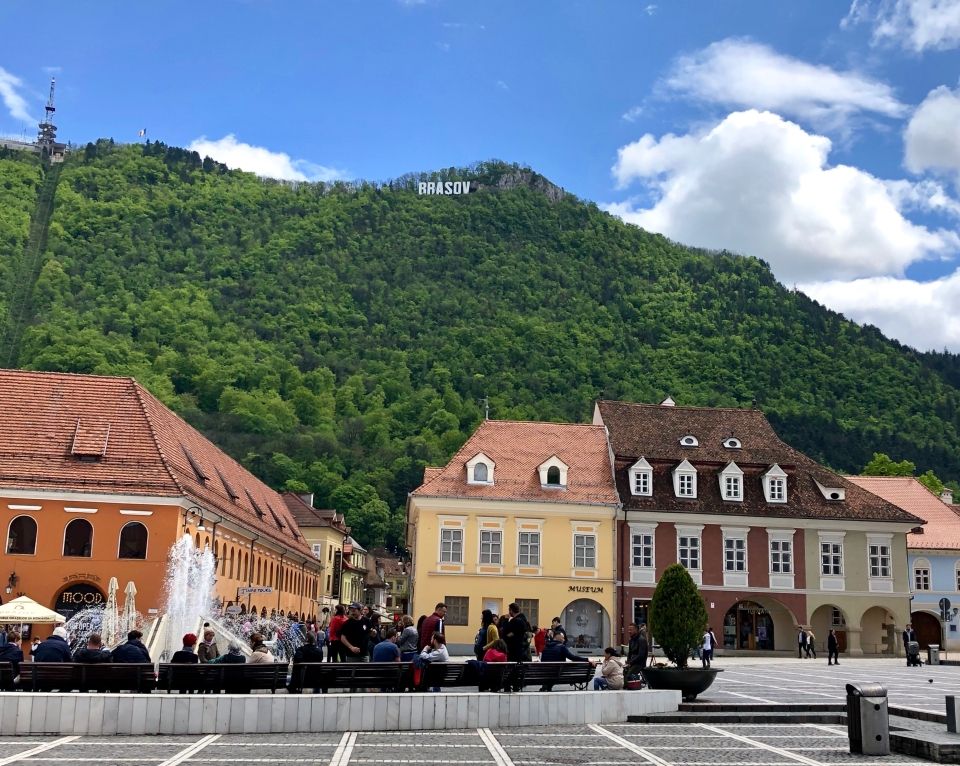
It took roughly an hour to get to the top. While the climb itself isn’t too difficult (there’s A LOT of zigzags to prevent too steep of a climb), you still need to exercise a lot of caution as the paths are narrow at points and- since it rains a lot here- are slick with mud. Please do not try this hike in flip flops.
Note- if you do not want to climb, but still want to get to the top, there is a cable car you can take up and down. We did not because we wanted the exercise (plus, it was apparently not in operation when we went).
All I can say about the view at the top is, “wow…”
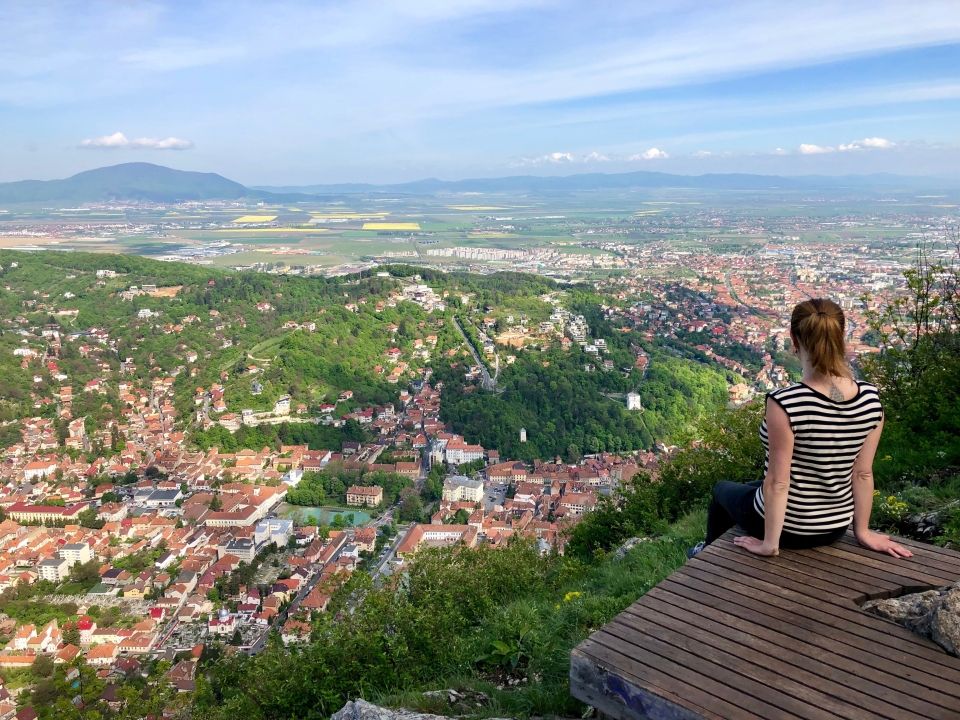
You could see everything. And just to the left of you is an amazing view of the mountain range:

Let’s just say that if there’s one thing you must do in Brasov, it’s to get to the top of this mountain.
What to Eat
Before I end this post, let’s talk food. Romania has a lot of amazing traditional dishes that are definitely worth trying such as…
The bean and ham soup served in bread bowls.
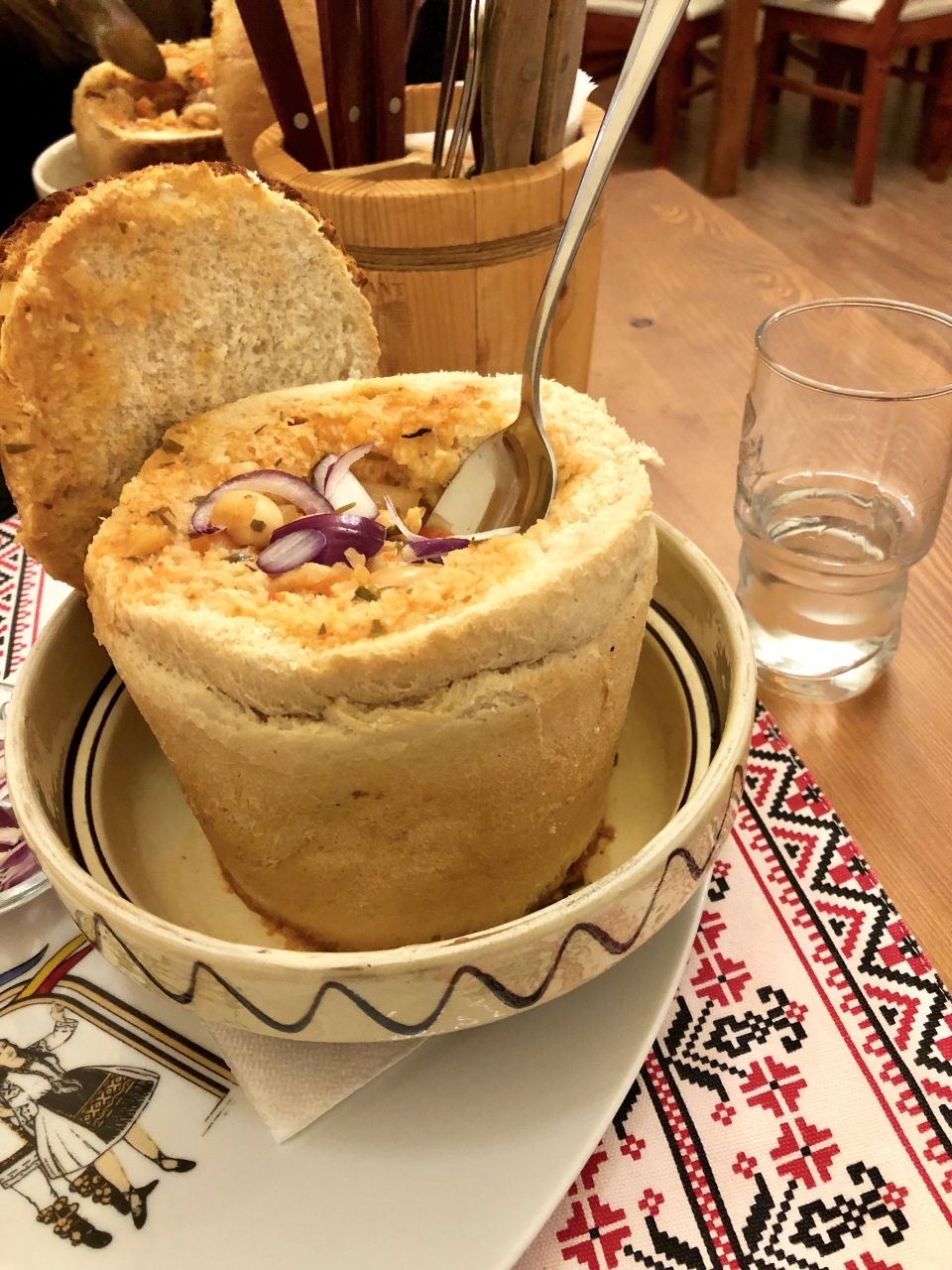
No, scratch that- bread towers filled with a bean and ham soup. The dough acts like a sponge and absorbs most of the soup. Essentially, you’re eating the world’s best soggy bread. Normally I pride myself on my ability to lick my plate clean. I did not have the stomach capacity to do that in this case.
There’s also papanasi:

This famous Romanian cheese doughnut is practically a must if in Romania. During our Bucharest walking tour, we were told to order this dessert when placing our main meal orders at the very start of dinner. Apparently this dessert takes about an hour to bake and prepare. Unfortunately for us, our papanasi was not served until the 2-hour mark… It was an awesome dessert, but I don’t think I’d get it again due to the wait time.
Also worth getting is Romania’s polenta dish, which is made with cream, goat cheese, and usually some type of meat:
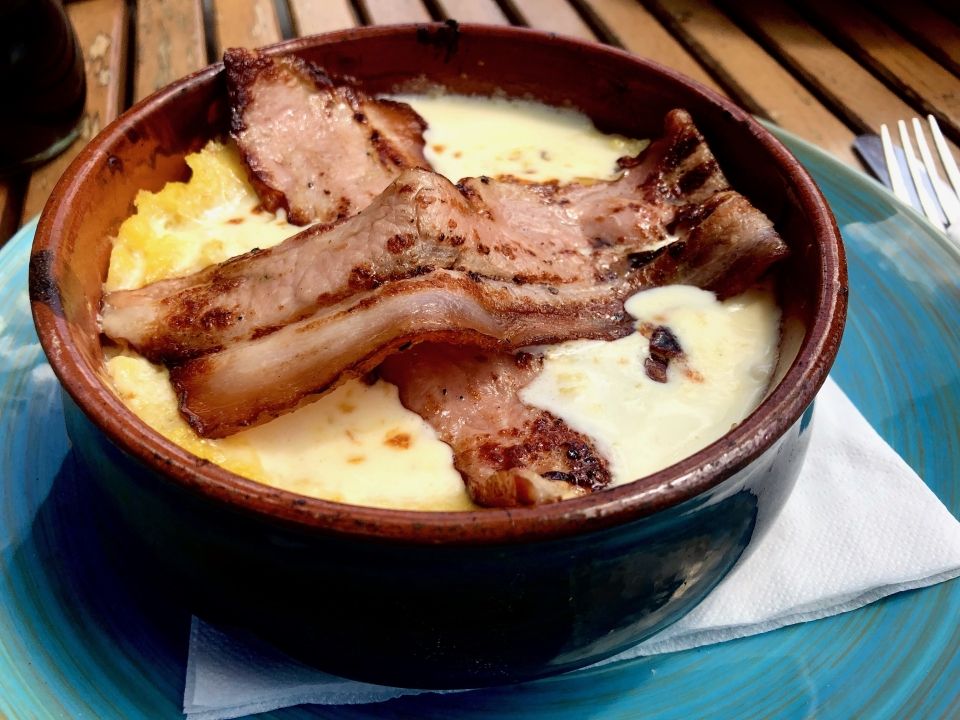
Of course, I got this comfort dish on a hot afternoon. Not the best decision, but still very delicious.
And finally, you must try covrigi, which is essentially a pretzel. This is served everywhere is Romania and is super cheap; only 1 lei, which is the equivalent to $0.24.
Instead of salt, the pretzel is topped with toasted sesame seeds. Good way to cut down on your sodium intake.

And with that, I conclude my trip to Romania! A special thanks to Bethany for allowing me to come along with her and discover this beautiful and underrated country. Romania has my stamp of approval.
Related Posts
What it’s like to Teach Abroad in the Czech Republic
Alumni Spotlight: Elisabeth B. After spending a year exploring historic streets and immersing herself in a new culture, Portland, Maine native Elisabeth Brewington returned home from teaching English in the... keep reading
Teach English in the Czech Republic
The Destination Placed right in the heart of Europe, Czech Republic is a unique destination known for its food and drink, bohemian lifestyle, and medieval architecture. It’s a great place... keep reading
Receiving my Acceptance Letter & The Process Leading up to Departure!
It has now been a year since I turned in my application to teach in the Czech Republic, but it seems like just yesterday. I remember frantically checking my email... keep reading
